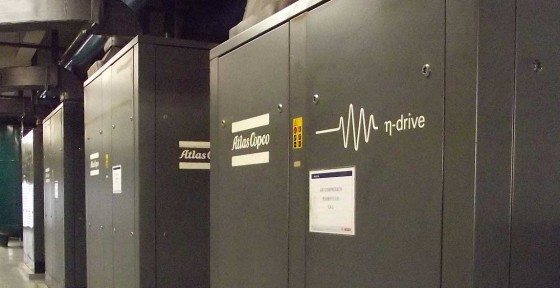Reduce, reuse, recycle. It’s a phrase of three R’s that, along with a familiar logo of three bent and successive arrows, usually green, helps kids and adults learn and remember the importance of conservation. The phrase and the logo can be found on everything from PET bottles to consumer electronics and are as easily recognizable as they are simple in delivery of their message: you can use what you already have to help save money, energy and resources.
Savvy manufacturers have always looked for ways to make their processes more efficient and effective. Technology, advancing at an exponential rate, makes this even easier. So do the inclusion of analytics, which can show in real identifiable numbers the ways equipment upgrades and optimization can implement our three R’s and, in return, deliver quantifiable cost savings over a specific, projected time period.
That’s just what happened at Wuxi Diesel when an Atlas Copco Energy Recovery System helped reduce both CO2 emissions and energy costs, by nearly 30 percent. Five Atlas Copco energy recovery control units enabled the plant to use energy recovered from their GA compressors’ cooling water to reduce steam demands and as a result, energy costs. Air conditioning systems and water heating elements in several parts of the facility could take advantage of this newly harnessed energy, reducing energy demands through less coal demands, their resulting emissions and ultimately, facility costs.
And the savings didn’t stop there. Atlas Copco provided the manufacturer with an Air Optimizer™ ES system, which uses remote monitoring to observe varying air demands and adjusts the series of compressors’ centralized controls to provide optimal management to accommodate these fluctuations. This more accurate control helped lower piping network demands and provided an additional energy savings of 30 percent.
Not only did these system changes ensure more reliable operation of the equipment in addition to their cost savings, they also grabbed the attention of others. The plant was awarded LEED Certification according to green building standards. Then these same philosophies and practices were integrated into several more of the customers’ plants, reducing energy costs at the same scope across a greater footprint.
Continuing to reduce energy use and costs is a constant challenge. One that can only be achieved by constantly looking for new ways to maximize the efficiency of necessary resources, optimize performance and reduce energy demands. The original three R’s were deemed reading, writing and arithmetic, but today’s lessons in efficiency are taken from the more modern and sensible curriculum – reduce, reuse, recycle.
Source: Compressed Air Blog


